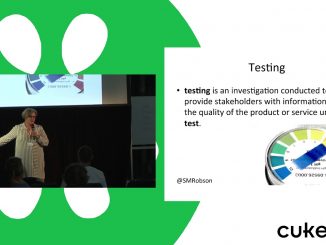Software Testing Videos and Tutorials: Load Testing, Unit Testing, Functional Testing, Performance Testing, Agile Testing, DevOps
Testcontainers is an open source Java 8 library that supports JUnit tests, providing lightweight, throwaway instances of common databases, Selenium web browsers, or anything else that can run in a Docker container.
This presentation discusses the qualities of the modern software testing leader. Whether you are responsible for establishing a software testing practice in your organization, managing test processes or people, defining testing strategies for your team, coaching testing or influencing your co-workers to adopt successful quality practices, this presentation provides you the foundations and knowledge to succeed in your endeavor.
Motivation software testers is perhaps the most important duty of the test managers. However, testers might responds very differently to the same stimulus according to their personality. This video show participants the practical way to deal with this issue of software testers’ motivation, using the following structure.
There is a lot of talk in modern software testing teams about experimentation. Classically an experiment is a very structured series of activities designed to find something out. Sounds a lot like software testing and is in direct alignment with the concepts around Test-Driven Development (TDD), Behavior-Driven Development (BDD) and Acceptance Test-Driven Development (ATDD). This video discusses how to design testing experiments that are valuable and provide the right insights to the right people, at the right time.
There is a value in writing tests and there is also a cost. The currency is time. The trade-offs are difficult to evaluate in software testing because cost and value are often seen by different people. The writer of the test bears much of the short term cost while long term benefits and cost are borne by the rest of the team.
DevOps is based on continuous delivery and anything that breaks the continuity is a bottleneck. While Agile and DevOps have become common terms in Development and Testing organizations, manual build and deployment processes are still causing problems along with integration and testing.
The evolution of software from a simple application running in an isolated system to a multi-node solution in a network and now to geographically distributed cloud solution with hundreds or thousands of nodes, has brought about its own challenges in terms of testing. Testing strategies which works well in one model is not really applicable to others. While many of the tests for a cloud hosted solution can be done by replicating a subset of the actual production environment, some test to be effective need a production like environment.








